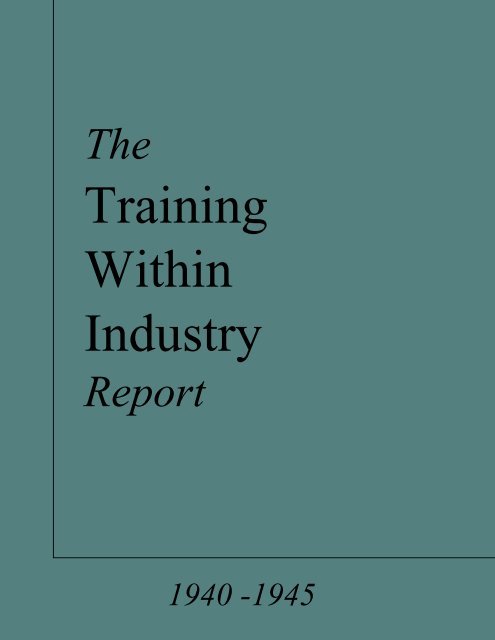Archive for December, 2020
How will you allocate your time differently?
I don’t like resolutions, but I do like looking back to assess how spent my time differently over the previous year. Below is a short exercise that could help you get ready for 2021.
Below are some questions intended to help you assess how you spent your time differently in 2020. Take fifteen seconds, or so, to think through each one.
Did you spend more time with your family or less?
Did you spend more time helping yourself or others?
Instead of commuting, what did you do with your time?
Did you work more hours or fewer?
Did you spend more time on your mental/spiritual health or less?
Did you take more vacation days or fewer?
Instead of eating out, what did you do with that time?
Did you exercise more or less?
What did you do with your time freed by reduced business travel do more?
Did you participate in more meetings or fewer?
Did you sleep more or less?
Grab a pen and paper (or print out the text below) and let’s go through the rest of the exercise.
What are the top three questions that caused the strongest emotional response? (Write them down.) For those three questions, think through three scenarios: A) 2021 is just like 2020. B) 2021 amplifies the changes you experienced in 2020. C) 2021 is just like 2019.
For each scenario, write down how you’d allocate your time differently in 2021.
The question that caused the strongest emotional response:
_________________________________________________________________________
With regard to the question above, how would you allocate your time differently in 2021?
Scenario A (same as 2020) ____________________________________________________
Scenario B (amplified changes) _________________________________________________
Scenario C (same as 2019) ____________________________________________________
The question that caused the second strongest emotional response:
________________________________________________________________________
With regard to the question above, how would you allocate your time differently in 2021?
Scenario A (same as 2020) ___________________________________________________
Scenario B (amplified changes) ________________________________________________
Scenario C (same as 2019) ____________________________________________________
The question that caused the third strongest emotional response:
________________________________________________________________________
With regard to the question above, how would you allocate your time differently in 2021?
Scenario A (same as 2020) __________________________________________________
Scenario B (amplified changes) _______________________________________________
Scenario C (same as 2019) ___________________________________________________
My list of questions likely missed important questions for you. You may want to go back and ask yourself other questions and see if your emotional response is strong enough to displace the top three you identified above.
This little exercise doesn’t generate resolutions, nor will it tell you how to allocate your time in 2021. But, I hope it helps you more skillfully navigate the uncertainty that 2021 is certain to bring.
Happy New Year. And thanks for reading.
“Sundial” by Nigel_Brown is licensed under CC BY 2.0
The Foundation of Leadership Development — Work Products
 Leadership development is a good idea in principle, but not in practice. Assessing a person against a list of seven standard competencies does not a leadership development plan make. Nor does a Meyers-Briggs assessment or a strengths assessment. The best way I know to describe the essence of leadership development is through a series of questions to assess and hire new leaders.
Leadership development is a good idea in principle, but not in practice. Assessing a person against a list of seven standard competencies does not a leadership development plan make. Nor does a Meyers-Briggs assessment or a strengths assessment. The best way I know to describe the essence of leadership development is through a series of questions to assess and hire new leaders.
Here’s the first question: Is this person capable of doing the work required for this leadership position? If you don’t start here, choose the person you like most and promote (or hire) them into the new leadership position. It’s much faster, and at least you’ll get along with them as the wheels fall off.
Next question: In this leadership position, what work products must the leader create (or facilitate the creation of)? Work products are objective evidence that the work has been completed. Examples of work products: analyses, reports, marketing briefs, spreadsheets, strategic plans, product launches, test results for new technologies. Here’s a rule: If you can’t define the required work products, you can’t define the work needed to create them. Here’s another rule: If you can’t define the work, you can’t assess a candidate’s ability to do that work. And if you can’t assess a candidate’s ability to the work, you might as well make it a popularity contest and hire the person who makes the interview committee smile.
Next question: Can the candidate show work products they’ve created that fit with those required for the leadership position? To be clear, if the candidate can show examples of all the flavors of work products required for the position, it’s a lateral move for the candidate. That’s not a bad thing, as there are good reasons candidates seek lateral positions (e.g., geographic move due to family or broadening of experience – new product line or customer segment). And if they’ve demonstrated all the work products, but the scope and/or scale are larger, the new position, the new position is a promotion for the candidate. Here’s a rule: if the candidate can’t show you an example of a specific work product or draw a picture of one on the whiteboard, they’ve never done it before. And another rule: when it comes to work products, if the candidate talks about a work product but can’t show you, it’s because they’ve never created one like that. And talking about work products in the future tense means they’ve never done it. When it comes to work products, there’s no partial credit.
Next question: For the work products the candidate has shown us, are they relevant? A candidate won’t be able to show you work products that are a 100% overlap with those required by the leadership position. The context will be different, the market will be different, and the players will be different. But, a 50-70% overlap should be good enough.
Next question: For the relevant work products the candidate has shown us, do they represent more than half of those required? If yes, go to the next question.
Next question: For the work products the candidate has not demonstrated, has the team done them? If the team has done a majority of them, that’s good. Go to the next question.
Next question: For the work products the candidate or team has not demonstrated, can we partner them with an expert (an internal one, I hope) who has? If yes, hire the candidate.
Leadership development starts with the definition of the new work the leader must be able to do in their next position. And the best way I know to define the work is to compile a collection of work products that must be created in the next position and match that against the collection of work products the leader has created. The difference between the required work products and the ones the leader has demonstrated defines the leadership development plan.
To define the leadership development plan, start with the work products.
And to help the leader develop, think apprenticeship. And for that, see this seminal report from 1945.
The Dark Underbelly of Success
 Best practice – a tired recipe you recycle because you think the world is static.
Best practice – a tired recipe you recycle because you think the world is static.
Emergent practice – a new way to work created from whole cloth because the context is new.
Worst practice – a best practice applied to a world that has changed around you.
Novel practice– work that recognizes the world is a different place but is dismissed out-of-hand because everyone wants to live in the comfortable past.
Continuous improvement – when you try to put a shine on a tired, old process that worked ten years ago.
Discontinuous improvement – work that is disrespectful to the Status Quo and hurts people’s feelings.
Grow the core – when you do what you did in 2010 because you don’t know what else to do.
Obsolete your best work – when you do work that makes it clear to your customers that they should not have purchased your most successful product.
Reduce operating expense – what you do when you don’t know how to grow the top line and want to eliminate the flexibility to respond to an uncertain future.
Grow the top line – when you launch a new product that causes your customers to happily throw away the product they just bought from you.
A PowerPoint slide deck that defines your strategic plan – an electronic work product that distracts you from the reality of an ever-changing future.
A new product that is radically better than your last one – what you should create instead of a PowerPoint slide deck that defines your strategic plan.
MBA – a university degree that gives you a pedigree so companies hire you.
Ph.D. – a university degree that teaches you to learn, but takes too long.
Return On Investment (ROI) – a calculation that scuttles new work that would reinvent your business.
Imagination – thinking that will help you navigate an uncertain future, but is knee-capped by the ROI calculation.
Standard work – a process you used last time and will use next time because, again, you think the world is static.
Judgment – thinking that creates a whole new business trajectory to address an uncertain future but can get you fired if you use it.
A sustainable competitive advantage – a relic of a slow-moving world.
Continual change – the only way to deal with an ever-accelerating future.
Success – profits from work done by people who retired from your company some time ago.
Success – the thing that blocks you from working on the unproven.
Success – what pays the bills.
Success – what jeopardizes your ability to pay the bills in five years.
Success – why people think old practices are best practices.
Success – why new work is so difficult to do.
Success – why continuous improvement carries the day.
Success – why discontinuous improvement threatens.
Success – the mother of complacency.
“dark underbelly” by JoeBenjamin is licensed under CC BY-NC 2.0
The Innovation Mantra
 We have an immense distaste for uncertainty. And, as a result, we create for ourselves a radical and unskillful overestimation of our ability to control things. Our distaste of uncertainty is really a manifestation of our fear of death. When we experience and acknowledge uncertainty, it’s an oblique reminder that we will die. And that’s why talk ourselves into the belief we can control thing we really cannot. It’s a defense mechanism that creates distance between ourselves and from feeling our fear of death. And it’s the obliquity that makes it easier to overestimate our ability to control our environment. Without the obliquity, it’s clear we can’t control our environment, the very thing we wake up to every morning, and it’s clear we can’t control much. And if we can’t control much, we can’t control our aging and our ultimate end. And this is why we reject uncertainty at all costs.
We have an immense distaste for uncertainty. And, as a result, we create for ourselves a radical and unskillful overestimation of our ability to control things. Our distaste of uncertainty is really a manifestation of our fear of death. When we experience and acknowledge uncertainty, it’s an oblique reminder that we will die. And that’s why talk ourselves into the belief we can control thing we really cannot. It’s a defense mechanism that creates distance between ourselves and from feeling our fear of death. And it’s the obliquity that makes it easier to overestimate our ability to control our environment. Without the obliquity, it’s clear we can’t control our environment, the very thing we wake up to every morning, and it’s clear we can’t control much. And if we can’t control much, we can’t control our aging and our ultimate end. And this is why we reject uncertainty at all costs.
Predictable, controllable, repeatable, measurable – overt rejections of uncertainty. Six Sigma – Measure, Analyze, Improve, Control – overt rejection of uncertainty. Standard work – rejection of uncertainty. Don’t change the business model – a rejection of uncertainty. A rejection of novelty is a rejection of uncertainty. And that’s why we don’t like novelty. It scares us deeply. And it scares us because it reminds us that everything changes, including our skin, joints, and hairline. And that’s why it’s so challenging to do innovation.
Innovation reminds us of our death and that’s why it’s difficult? Really? Yes.
Six Sigma is comforting because its programmatic illusion of control lets us forget about our death? Yes.
The aging business model reminds us of our death and that’s why we won’t let it go? Yes.
That’s crazy! Yes, but at the deepest level, I think it’s true.
I understand if you disagree with my rationale. And I understand if you think my thinking is morbid. If that’s the case, I suggest you write down why you think it’s so incredibly difficult to create a new business model, to do novel work, or to obsolete your best work. I’ll stop for a minute to give you time to grab a pen and paper. Okay, now put your pen to paper and write down why doing innovation (doing novel work) is so difficult. Now, ask yourself why that is. And do that three more times. Where did you end up? What’s the fundamental reason why doing new work (and the uncertainty that comes with it) is so difficult to do?
To be clear, I’m not advocating that you tell everyone that innovation is difficult because it reminds them that they’ll die. I explained my rationale to give you an idea of the magnitude of the level of fear around uncertainty so that, when someone is scared to death of novelty, you might help them navigate their fear.
Trying something new doesn’t invalidate what you did over the last decade to grow your business, nor will it replace it immediately, if it all. Maybe the new work will add to what you’ve done over the last decade. Maybe the new work will amplify what’s made you successful. Maybe the new work will slowly and effectively migrate your business to greener pastures. And maybe it won’t work at all. Or, maybe your customers will make it work and bury you and your business.
With innovation, start small. That way the threat is smaller. Run small experiments and share the results, especially the bad results. That way you demonstrate that unanticipated results don’t kill you and, when you share them, you demonstrate that you’re not afraid of uncertainty. Try many things in parallel to demonstrate that it’s okay that everything doesn’t turn out well and you’re okay with it. And when someone asks what you’ll do next, tell them “I don’t know because it depends on how the next experiment turns out.”
When you’re asked when you’ll be done with an innovation project, tell them “I don’t know because the work has never been done before.” And if they say you must give them a completion date, tell them “If you must have a completion date, you do the project.”
When you’re running multiple experiments in parallel and you’re asked what you’ll do next, tell them you’ll do “more of what works and less of what doesn’t.” And if they say “that’s not acceptable”, then tell them “Well, then you run the project.”
We don’t have nearly as much control as our minds want to us believe, but that’s okay as long as we behave like we know it’s true. Uncertainty is uncomfortable, but that’s not a bad thing. In fact, I think it’s a good thing.
If people aren’t afraid, there can be no uncertainty. And if there’s no uncertainty, there can be no novelty. And if there’s no novelty, there can be no innovation. If people aren’t afraid, you’re doing it wrong.
As a leader, tell them you’re afraid but you’re going to do it anyway.
As a leader, tell your team that it’s natural to be afraid and their fear is a leading indicator of innovation.
As a leader, tell them there’s one thing you’re certain about – that innovation is uncertain.
And when things get difficult, repeat the Innovation Mantra: Be afraid and do it anyway.
“Mantra” by j / f / photos is licensed under CC BY-ND 2.0
When is it innovation theater?
 When you go to the cinema or the playhouse you go you see a show. The show may be funny, it may be sad, it may be thought-provoking, it may be beautiful, and it may take your mind off your problems for a couple of hours; but it’s not real. Sure, the storyline is good, but it came from someone’s imagination. And because it’s a story, it doesn’t have to bound by reality. Sure, the choreography is catchy, but it’s designed for effect. Yes, the cinematography paints a good picture, but it’s contrived. And, yes, the actors are good, but they’re actors. What you see isn’t real. What you see is theater.
When you go to the cinema or the playhouse you go you see a show. The show may be funny, it may be sad, it may be thought-provoking, it may be beautiful, and it may take your mind off your problems for a couple of hours; but it’s not real. Sure, the storyline is good, but it came from someone’s imagination. And because it’s a story, it doesn’t have to bound by reality. Sure, the choreography is catchy, but it’s designed for effect. Yes, the cinematography paints a good picture, but it’s contrived. And, yes, the actors are good, but they’re actors. What you see isn’t real. What you see is theater.
If you are asked to focus on the innovation process, that’s theater. Innovation doesn’t care about process; it cares about delivering novel customer value. The process isn’t most important, the output is. When there’s an extreme focus on the process that usually means an extreme focus on the output of the process would be embarrassing.
If you are tasked to calculate the net present value of the project hopper, that’s theater. With innovation, there’s no partial credit for projects you’re not working on. None. The value of the projects in the hopper is zero. The song about the value of the project hopper is nothing more than a catchy melody performed to make sure the audience doesn’t ask about the feeble collection of projects you are working on. And, assigning a value to the stagnant project hopper is a creative storyline crafted to hide the fact you have too many projects you’re not working on.
If you are asked to create high-level metrics and fancy pie charts, that’s innovation theater. Process metrics and pie charts don’t pay the bills. Here’s innovation’s script for paying the bills: complete amazing projects, launch amazing products, and sell a boatload. Full stop. If your innovation script is different than that, ball it up and throw it away along with its producer.
If the lame projects aren’t stopped so better ones can start, if people aren’t moved off stale projects onto amazing ones, if the same old teams are charged with the innovation mandate, if new leaders aren’t added, if the teams are measured just like last year, that’s innovation theater. How many mundane projects have you stopped? How many amazing projects have you started? How many new leaders have you added? How many new teams have you formed? How will you measure your teams differently? How do you feel about all that?
If a return on investment (ROI) calculation is the gating criterion before starting an amazing project, that’s innovation theater. Projects that could create a new product family with a fundamentally different value proposition for a whole new customer segment cannot be assigned an ROI because no one has experience in this new domain. Any ROI will be a guess and that’s why innovation is governed by judgment and not ROI. Innovation is unpredictable which makes an ROI is impossible to predict. And if your innovation process squeezes judgment out of the storyline, that’s a tell-tale sign of innovation theater.
If the specifications are fixed, the resources are fixed, and the completion date is fixed, that’s innovation theater. Since it can be innovation only when there’s novelty, and since novelty comes with uncertainty, without flexibility in specs, resources, or time, it’s innovation theater.
If the work doesn’t require trust, it’s innovation theater. If trust is not required it’s because the work has been done before, and if that’s the case, it’s not innovation.
If you know it will work, it’s innovation theater. Innovation and certainty cannot coexist.
If a steering team is involved, it’s innovation theater. Consensus cannot spawn innovation.
If more than one person in charge, it’s innovation theater. With innovation, there’s no place for compromise.
And what to do when you realize you’re playing a part in your company’s innovation theater? Well, I’ll save that for another time.
“Large clay theatrical mask, Romisch-Germanisches Museum, Cologne” by Following Hadrian is licensed under CC BY-SA 2.0

 Mike Shipulski
Mike Shipulski